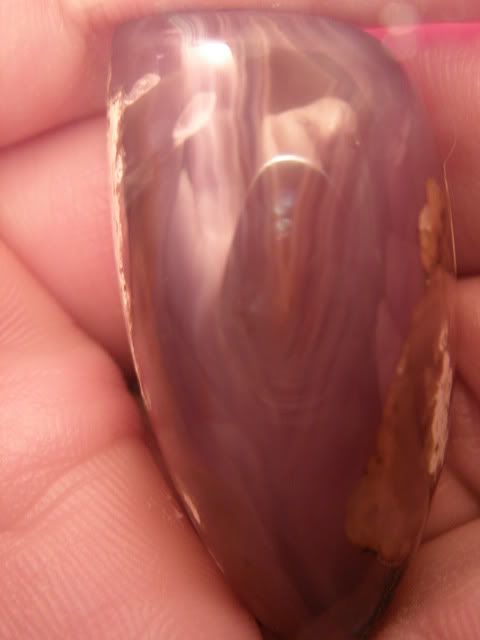Post by adrian65 on Dec 12, 2007 1:29:54 GMT -5
... on the long highway to the perfect polish!
Hi,
I post this as it might help others who deal with the same problems in polishing.
I bought some flexible diamond pads designed for DRY polishing. I respected the instructions till now, and did the sanding and polishing without any water. But this raised some problems:
1. The stone heated while sanding and mainly while polishing, till to temperatures hard to bear by hand. This could also lead to cracks in the more fragile stones.
2. Another problem was that, during sanding and polishing (mainly at 800 and 1500 grits) on the stone was build a thin grey layer coming from the diamond pad. I had to press hard to remove it, and sometimes its completely removal it was almost impossible while sanding. I had to use a dish washing abrasive sponge in order to remove the layer.
3. Finally, the main problem was that the shine was not very good. When I inspected the surface with a light microscope, I saw a lot of scratches. I think that the layer mentioned above acted like a shield and did not allow a proper sanding on all the surface.
I tried to do all the process with lot of water even if the pads are designed for dry. And all the issues described above disappeared. ;D The shine also improved.
Here are two pics of the same cab that I made for my daughter. The first one was posted before and at that time I was pretty proud with it:

And this one below is a similar pic taken after I remade the polish with the "wet technique":

I hope you can notice the difference, the reflexion is more clear in the second pic. And I might say the first one is not badly focused. Besides, no more hot rocks and roasted fingers
Thanks for looking. I hope it helps other newbie cabbers. I also kindly invite the master cabbers to express their opinions about this technique.
Adrian
Hi,
I post this as it might help others who deal with the same problems in polishing.
I bought some flexible diamond pads designed for DRY polishing. I respected the instructions till now, and did the sanding and polishing without any water. But this raised some problems:
1. The stone heated while sanding and mainly while polishing, till to temperatures hard to bear by hand. This could also lead to cracks in the more fragile stones.
2. Another problem was that, during sanding and polishing (mainly at 800 and 1500 grits) on the stone was build a thin grey layer coming from the diamond pad. I had to press hard to remove it, and sometimes its completely removal it was almost impossible while sanding. I had to use a dish washing abrasive sponge in order to remove the layer.
3. Finally, the main problem was that the shine was not very good. When I inspected the surface with a light microscope, I saw a lot of scratches. I think that the layer mentioned above acted like a shield and did not allow a proper sanding on all the surface.
I tried to do all the process with lot of water even if the pads are designed for dry. And all the issues described above disappeared. ;D The shine also improved.
Here are two pics of the same cab that I made for my daughter. The first one was posted before and at that time I was pretty proud with it:

And this one below is a similar pic taken after I remade the polish with the "wet technique":

I hope you can notice the difference, the reflexion is more clear in the second pic. And I might say the first one is not badly focused. Besides, no more hot rocks and roasted fingers

Thanks for looking. I hope it helps other newbie cabbers. I also kindly invite the master cabbers to express their opinions about this technique.
Adrian










